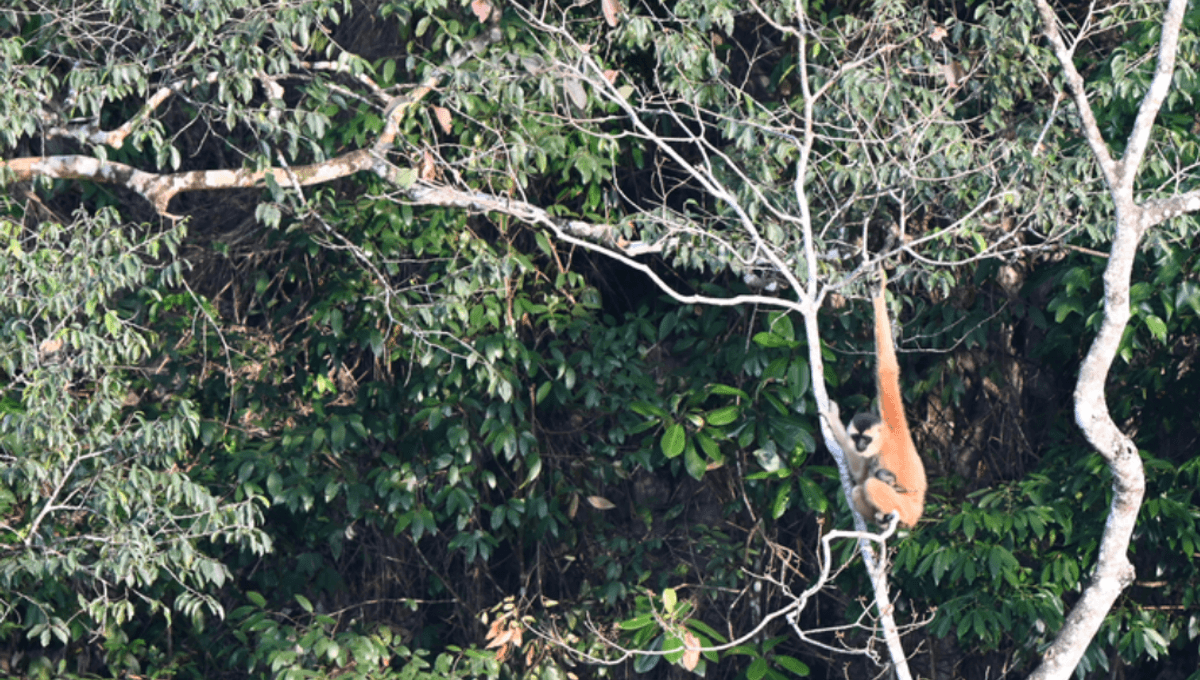
In the remote forests of northern Vietnam, a teeny, tiny gibbon has been spotted. This is no ordinary ape: it’s an infant of the world’s second-rarest ape species, the cao vit gibbon.
ADVERTISEMENT
The newly released footage (below) was shot in November 2024 by researchers at Fauna & Flora who were surveying the population in Cao Bang, a fragmented forest on the border of northern Vietnam and southeast China.
Their video shows a group of cao vit gibbons climbing and foraging in a tree, with one carrying a tiny infant clinging to her belly.
“We were very excited to spot another infant cao vit gibbon during our regular patrolling. This was the smallest baby gibbon I had ever seen and seeing it reminded me of my own children as babies being cared for by my wife,” Nguyen Duc Tho, Fauna & Flora’s cao vit gibbon project manager and part of the gibbon conservation team, said in a statement.
The cao vit gibbon (Nomascus nasutus), also known as the eastern black crested gibbon, is renowned for its morning whistling songs used to defend territory, as well as their long arms that enable them to swing acrobatically from tree to tree.
Just like many gibbon species, they exhibit pronounced sexual dimorphism: adult males have black fur, while adult females are buffish-yellow. They tend to couple-up for life and live in very small family groups.
ADVERTISEMENT
Fauna & Flora have been working to protect the cao vit gibbon for over 20 years. The species was assumed to be extinct in 2002 until some of their researchers spotted the elusive ape for the first time in years. However, the troubled species isn’t out of the woods yet; their current population is estimated to be just 74 individuals in 11 family groups.
The world’s rarest primate – the Hainan gibbon – was once considered to be a subspecies of cao vit gibbon, but they are now considered separate species. Found only in the western part of Hainan Island in the South China Sea, its population has dwindled to an estimated 35 individuals.
Over a year ago, a population survey by Fauna & Flora revealed that the number of cao vit gibbons was significantly lower than previously believed. Previous estimates had been inflated due to double-counting (an understandable error given the species’ dense habitat and fast-moving behavior).
However, this latest observation of a healthy infant is offering a new glimmer of hope for the species’ survival.
ADVERTISEMENT
“This is amazing and an encouraging sign of hope for the species’ population, which is currently very low, and highlights the critical importance of long-term monitoring and conservation efforts in Cao Bang,” added Duc Tho.
Source Link: Watch: Extremely Rare Baby Of World’s Second Rarest Ape Spotted In Vietnam